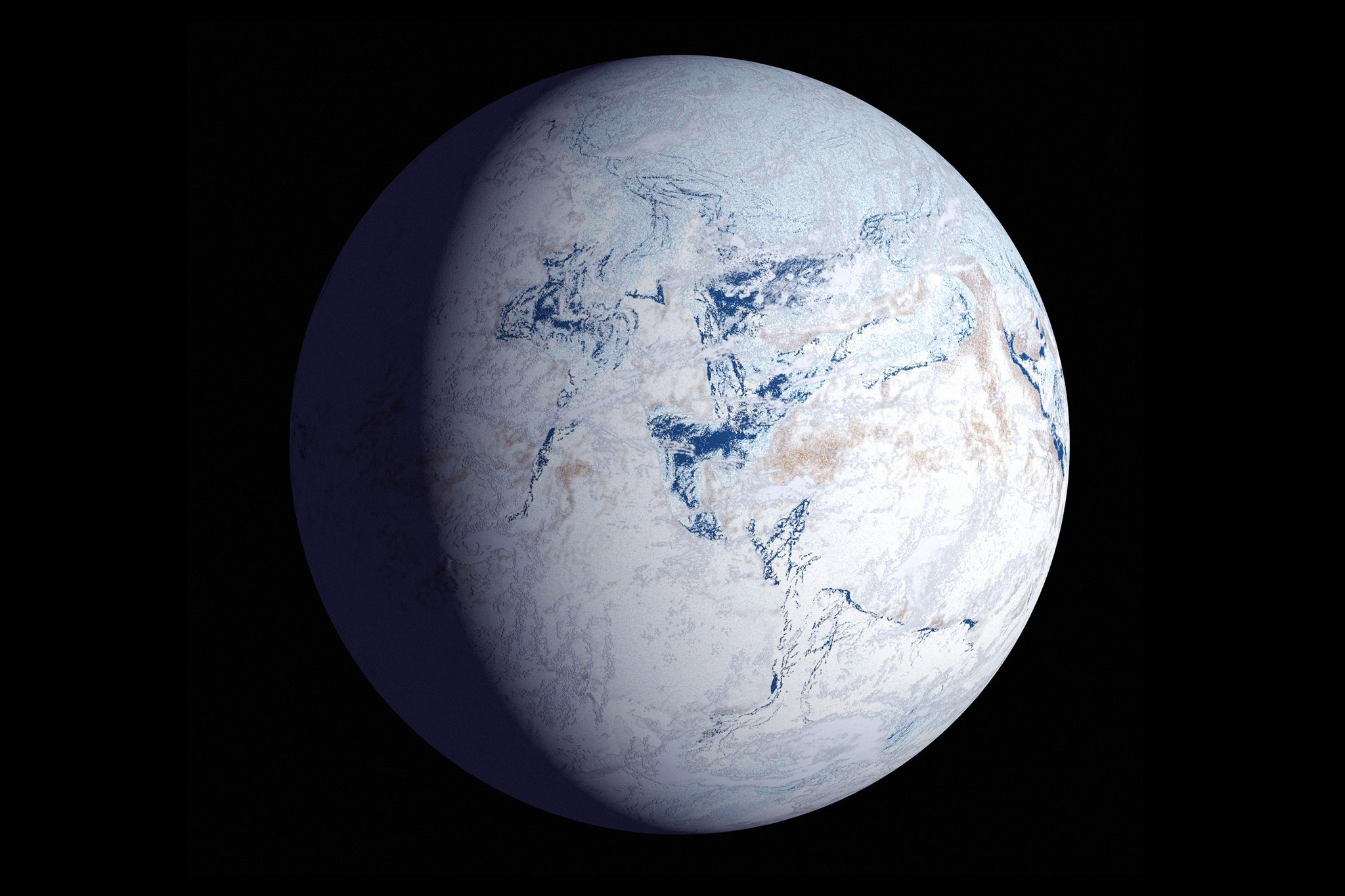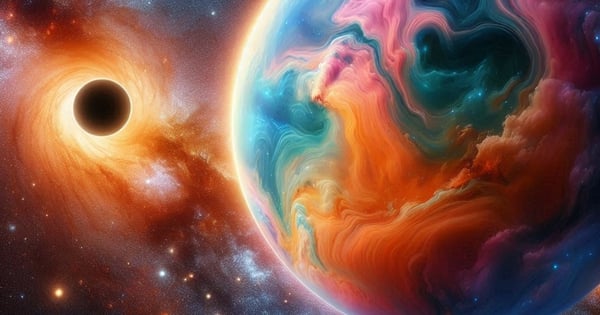(NLDO) - Scientists have just found evidence of a devastating "shock" to Earth's organisms, creating a completely new form of life.
The Earth once had a period when it turned into a white, seemingly dead snowball. But if that had not happened, our present-day civilization, and even our species, might not have or could not have emerged.
In a study recently published in the scientific journal Proceedings of the Royal Society B, the "White Earth" during the Ice Age (720-635 million years ago) of the Neoproterozoic era helped create a completely new form of life.
It is a multicellular organism.

Ice Age Earth covered in ice and snow - Graphic image: NASA
Why did multicellularity arise? Solving that mystery could help identify life on other planets and explain the diversity and complexity of Earth's organisms today.
According to Sci-News, conventional wisdom holds that oxygen concentrations must reach a certain threshold before individual cells can form multicellular colonies.
But the oxygen story does not fully explain why the multicellular ancestors of animals, plants, and fungi appeared on our planet at the same time.
Before that, life had evolved very slowly. As previous evidence suggests, life began to appear on Earth at the latest at the end of the Hadean eon (3.8 billion years ago), possibly even as early as 4.1 billion years ago.
Yet until the early stages of the Neoproterozoic era - 1 billion years ago - Earth's life was still very simple.
Using scaling theories, researcher William Crockett from the Massachusetts Institute of Technology (USA) and colleagues discovered that a hypothetical early animal ancestor would have swelled in size and complexed itself under the pressure of a snowball Earth.
In contrast, a single-celled organism that moves and absorbs through diffusion, such as bacteria, will become smaller.
This is because the frozen oceans during the "White Earth" period blocked sunlight, reducing photosynthesis and thus depleting nutrients in the sea.
Larger creatures can then process water for food faster, giving them a better chance of survival.
Due to this brutal survival pressure, multicellular organisms appeared en masse and survived the harsh ice age.
As the glaciers melted, these large creatures were able to expand their populations and gradually evolve into increasingly complex organisms.
541 million years ago, the Earth emerged from the Ediacaran period of the Neoproterozoic era, the last era of the Proterozoic eon. It was also the beginning of the Cambrian period, the first period of the Paleozoic era of the Phanerozoic eon.
This transition marked a more famous biological explosion in the Cambrian period, with the remarkably complex, bizarrely shaped multicellular organisms that serve as the basis for species today.
However, new discoveries show that the "White Earth" hundreds of millions of years before the Cambrian was what provided the "raw material" for this famous biological explosion.
According to Dr. Crockett, this new research result is like a guide for paleontologists to track down creatures born during the Ice Age, which can provide data about the first evolutionary leap of the Earth.
Source: https://nld.com.vn/hang-loat-sinh-vat-la-lung-ra-doi-tu-trai-dat-trang-196240703075330473.htm


![[Photo] Overcoming all difficulties, speeding up construction progress of Hoa Binh Hydropower Plant Expansion Project](https://vstatic.vietnam.vn/vietnam/resource/IMAGE/2025/4/12/bff04b551e98484c84d74c8faa3526e0)

![[Photo] Closing of the 11th Conference of the 13th Central Committee of the Communist Party of Vietnam](https://vstatic.vietnam.vn/vietnam/resource/IMAGE/2025/4/12/114b57fe6e9b4814a5ddfacf6dfe5b7f)



























































































Comment (0)